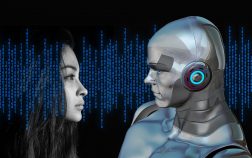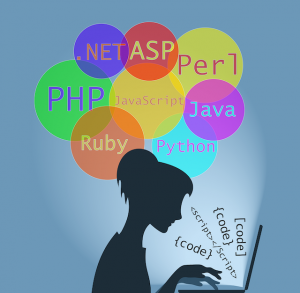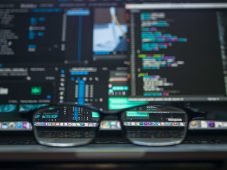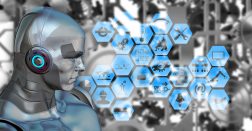Depending on whether you’re a glass-half-full or half-empty type of person, the words “artificial intelligence”, “machine learning” or “deep learning” can either conjure up a future in which humans are completely subject to their robot overlords, or an idyllic vision of sipping cocktails on sun loungers while algorithms do all the heavy lifting.
Reality is, as usual, a bit more complex than science fiction would have us believe. No, you’re not likely to be enslaved by your coffee machine anytime soon. Nor is it quite time to hand in your notice and head for the nearest sandy beach.
Artificial intelligence is a concept that feels overwhelming to many. In order to correctly understand its meaning, it’s necessary to take a look at some of the concepts behind the term. Artificial intelligence (AI) is the science of empowering machines to think like humans. Something people have been dreaming of (and fearing) for hundreds of years now. Two terms that are thrown around a lot in relation to artificial intelligence are machine learning and deep learning. While people tend to lump them in together, they are two distinct things.
Let’s take an in-depth look at machine learning vs. deep learning. We’ll also explore how these two technologies are deeply woven into our everyday lives.
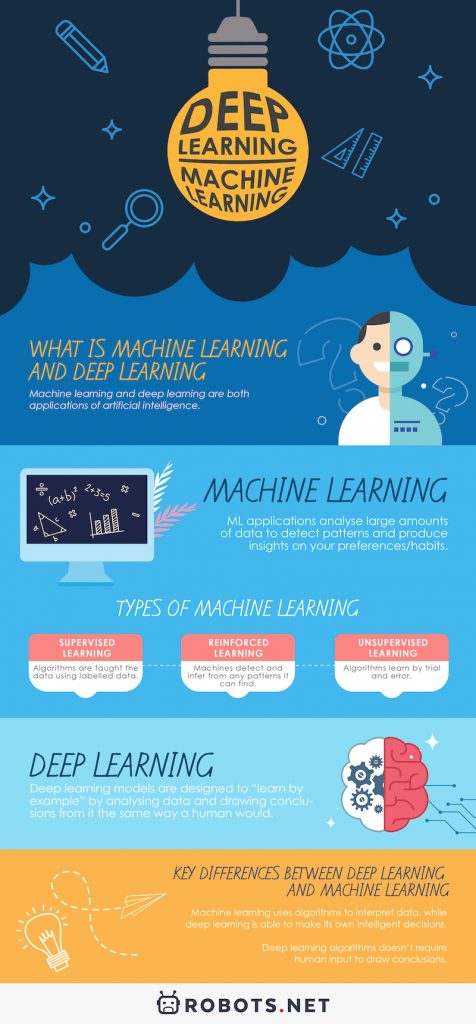

Machine Learning For Dummies


The first thing to know is that machine learning is a subset of artificial intelligence. And deep learning is a subset of machine learning. Now that’s out of the way, let’s focus on getting familiar with machine learning.
So how does machine learning work? In this day and age, ML more or less runs the world as we know it. Machine learning and deep learning power most of the applications and software we use on a daily basis. While you might have a very fuzzy idea of what the term “machine learning” actually means, it’s there humming away in the background, making your life easier day in and day out.
Machine learning and deep learning are both applications of artificial intelligence. ML consists of algorithms that continually analyse vast quantities of data. These algorithms learn from it and use that information to make informed decisions. ML in its current state was made possible by a couple of huge breakthroughs. First, the invention of the Internet (meaning more data to analyse). Secondly, the realisation on the part of computer scientists that it was more feasible to teach machines to “learn” rather than to programme them to perform each and every activity imaginable.
How Do Machine Learning Algorithms Work?
Machine learning algorithms are mathematical expressions that represent data within a given context. The aim of these algorithms is to use that data (social media likes, photos, comments, etc.) to produce insights.
Hence, you’re already using machine learning and deep learning applications every day without even realising it. ML powers a multitude of applications across industries, as well as in our daily lives. It helps financial professionals make the right trading decisions. It helps Google Maps tell you the best way to get home. It’s what enables Tinder to find you the most compatible match. Machine learning can provide you with insights on how to grow your business, when to water your plants and what to watch next on Netflix. It’s what enables Pinterest to suggest photos that look exactly like the living room of your dreams. It helps your banking app categorise the $3 you spent at a bakery chain as a food-related expense.
Types of Machine Learning
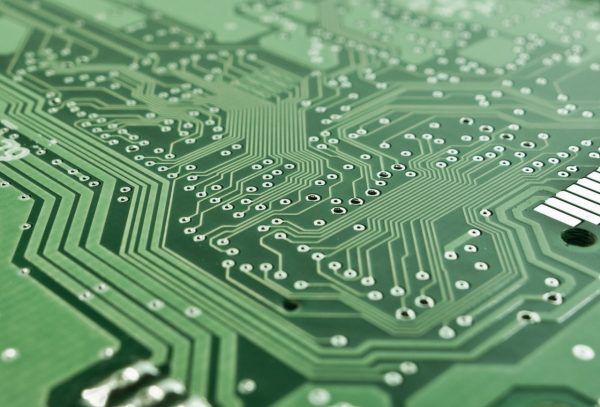

Machine learning comes in many exciting flavours that are more or less appropriate depending on its use case. We’re not going to dive too deep into the various technologies and machine learning techniques. It’s a deeply complex field that’s evolving at the speed of light. But before we move on to finding out about machine learning vs deep learning, here’s a quick overview of some general categories:
Supervised Learning
By far the most common type of machine learning. Supervised ML uses labelled data and sets out with the aim of predicting an outcome. For example, when a business uses a subscription-based distribution model to predict how many new sign-ups they’ll have over the next quarter. In this case, the algorithm would use previous data based on a variety of different factors to determine the potential output. Further examples include navigation apps such as Waze that take in variables such as weather and traffic conditions in order to suggest the fastest route home.
Unsupervised Learning
Unsupervised learning uses unlabeled data and doesn’t set out with any particular aim in mind. It analyses clusters of data points with the aim of grouping them together in relevant groups. It has fewer obvious applications than supervised ML. But, it is useful to detect patterns. For example, a retail company could develop an unsupervised ML algorithm to help segment products with similar features.
Reinforced Learning
Last but not least, there is reinforced learning, a semi-supervised learning model in machine learning. In reinforced learning, algorithms are “trained” to reach a given objective by trial and error. In a way, a system of rewards and punishments is used, similar to how one would train a dog. The most widely-known application of RL is probably Google’s AlphaGo algorithm, which was provided with data on all the possible moves a human Go player could make and tasked with determining the best course of action to take. The programme was eventually able to beat a world Go champion.
As you’ve probably grasped by now, there are plenty of ways for machines to learn new tricks and to apply them in a way that is helpful to us humans. However, things start to get really exciting when we look at deep learning (basically machine learning on steroids).
Deep Learning Vs. Machine Learning
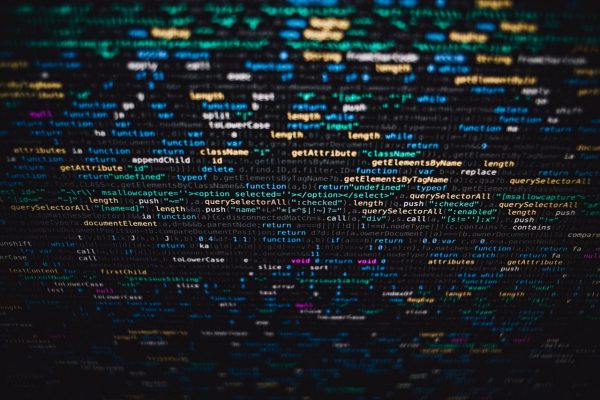

To tell the truth, there isn’t really a case for “deep learning vs machine learning”, as the former is actually a subset of the latter. Deep learning IS machine learning, which is why people tend to use them interchangeably.
Most deep learning methods use what’s known as a “neural network” (a layered structure of algorithms loosely inspired by the human brain). The word “deep” stems from the fact that while traditional neural networks only have two to three layers of algorithms, deep neural networks can have as many as 150. That’s one big difference between deep learning and machine learning right there.
Basically, deep learning models are designed to continually analyze data and draw conclusions from it in a similar way to how a human would. Deep learning teaches machines to do something that comes naturally to humans: learning by example. By performing classification directly from data (images, text or sound), deep learning can attain extremely high levels of accuracy – sometimes going above and beyond the human eye.
What Exactly Is Deep Learning?
Deep learning was first developed over 30 years ago but became applicable only recently. There are two main reasons for this: deep learning requires high volumes of data and substantial computing power. The advent of the internet, high-performance GPUs and parallel technologies such as cloud computing are what helps us achieve results that we would never have thought possible a couple of decades ago.
Some examples of deep learning that are currently creating a lot of buzz are autonomous vehicles, or driverless cars (where deep learning can help vehicles detect objects such as traffic lights and stop signs, not to mention pedestrians), voice control in everyday gadgets such as smart speakers and TVs, and industrial automation, where deep learning helps improve worker safety by detecting people in the vicinity of potentially dangerous machinery.
Key Differences Between Deep Learning And Machine Learning


Machine learning uses algorithms to analyse and interpret data, while deep learning layers algorithms in a neural network that is able to make its own intelligent decisions.
Machine learning models do improve over time, but require a certain degree of guidance. Deep learning algorithms (that work as they’re intended) don’t require human input to draw correct conclusions.
In a nutshell, deep learning is the next big evolution of machine learning, that will enable machines to make their own decisions without a human telling them to do so.
There you have it: while machine learning and deep learning are deeply linked, there are some fundamental differences between the two.
Final Thoughts
So what’s coming next for machine learning and deep learning? Imagine machine learning as a rocket ship and data as its fuel. While we’ve already reached a level of technological prowess that wouldn’t have been imaginable only a couple of decades ago, things are set to get even more exciting as we produce increasingly large amounts of data. Stay tuned!









